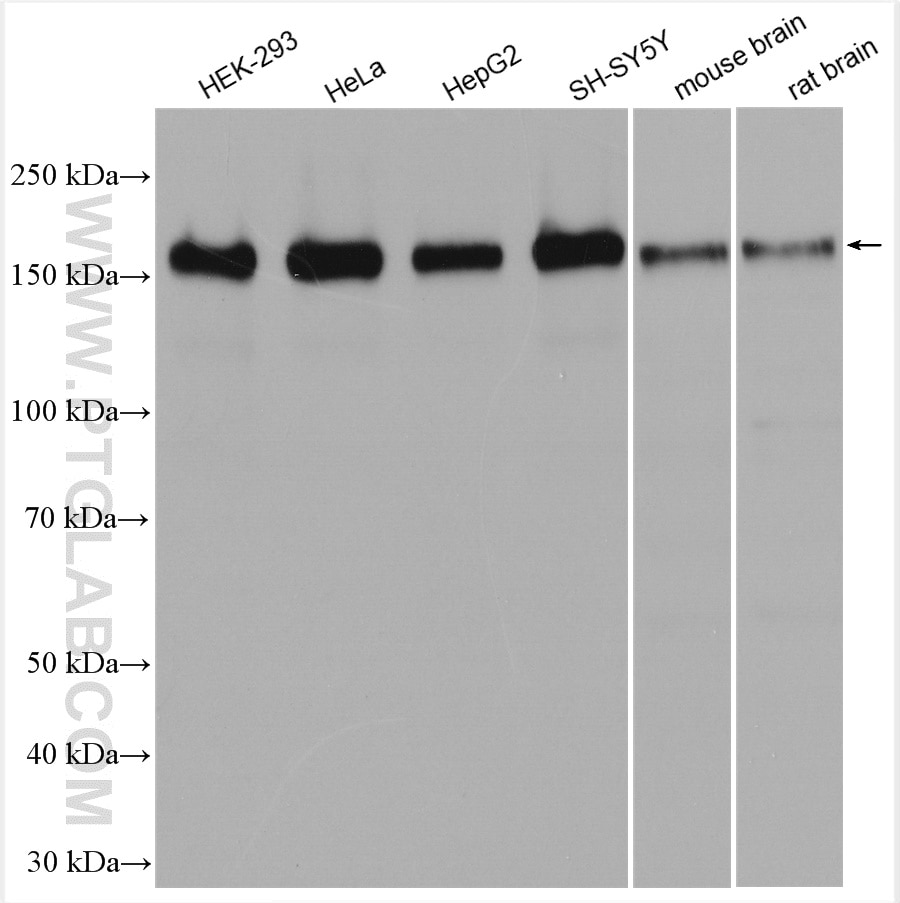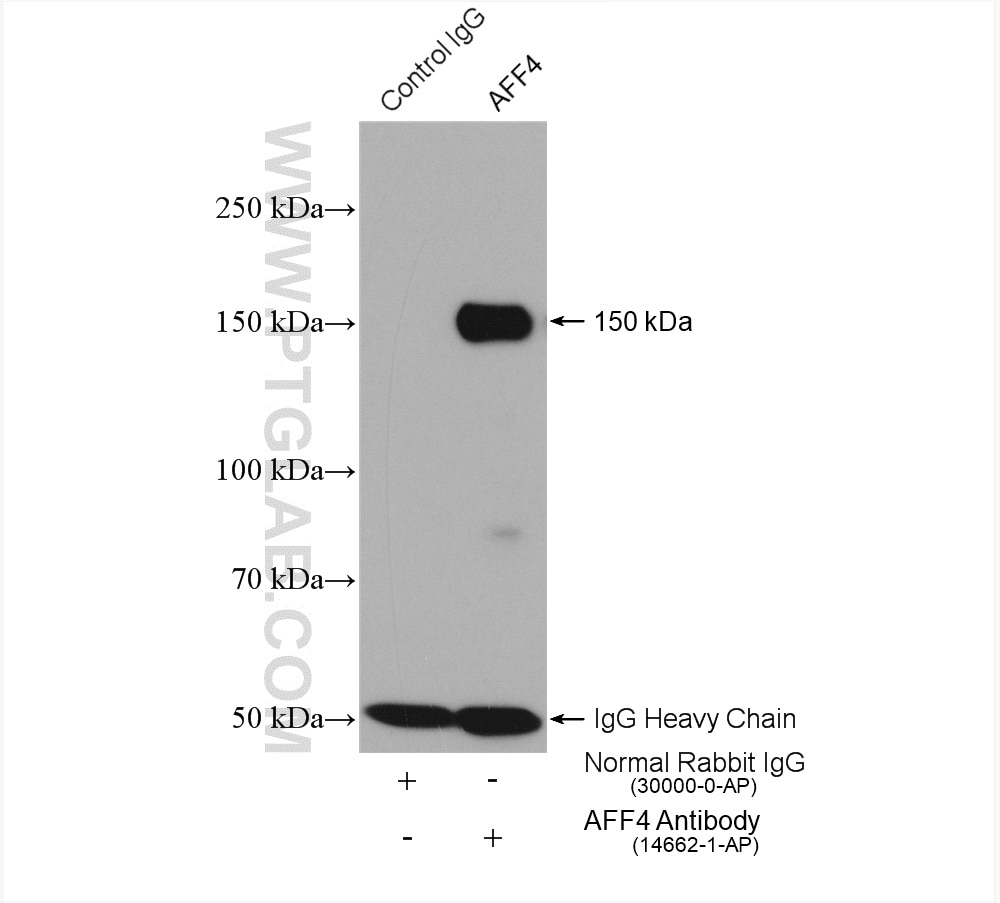- Featured Product
- KD/KO Validated
AFF4 Polyklonaler Antikörper
AFF4 Polyklonal Antikörper für WB, IP, ELISA
Wirt / Isotyp
Kaninchen / IgG
Getestete Reaktivität
human, Maus, Ratte
Anwendung
WB, IHC, IP, CoIP, ELISA
Konjugation
Unkonjugiert
Kat-Nr. : 14662-1-AP
Synonyme
Geprüfte Anwendungen
| Erfolgreiche Detektion in WB | HEK-293-Zellen, HeLa-Zellen, HepG2-Zellen, Maushirngewebe, Rattenhirngewebe |
| Erfolgreiche IP | HeLa-Zellen |
Empfohlene Verdünnung
| Anwendung | Verdünnung |
|---|---|
| Western Blot (WB) | WB : 1:5000-1:50000 |
| Immunpräzipitation (IP) | IP : 0.5-4.0 ug for 1.0-3.0 mg of total protein lysate |
| It is recommended that this reagent should be titrated in each testing system to obtain optimal results. | |
| Sample-dependent, check data in validation data gallery | |
Veröffentlichte Anwendungen
| KD/KO | See 2 publications below |
| WB | See 17 publications below |
| IHC | See 1 publications below |
| IP | See 3 publications below |
| CoIP | See 1 publications below |
Produktinformation
14662-1-AP bindet in WB, IHC, IP, CoIP, ELISA AFF4 und zeigt Reaktivität mit human, Maus, Ratten
| Getestete Reaktivität | human, Maus, Ratte |
| In Publikationen genannte Reaktivität | human, Maus |
| Wirt / Isotyp | Kaninchen / IgG |
| Klonalität | Polyklonal |
| Typ | Antikörper |
| Immunogen | AFF4 fusion protein Ag6336 |
| Vollständiger Name | AF4/FMR2 family, member 4 |
| Berechnetes Molekulargewicht | 127 kDa |
| Beobachtetes Molekulargewicht | 140-150 kDa |
| GenBank-Zugangsnummer | BC063007 |
| Gene symbol | AFF4 |
| Gene ID (NCBI) | 27125 |
| Konjugation | Unkonjugiert |
| Form | Liquid |
| Reinigungsmethode | Antigen-Affinitätsreinigung |
| Lagerungspuffer | PBS with 0.02% sodium azide and 50% glycerol |
| Lagerungsbedingungen | Bei -20°C lagern. Nach dem Versand ein Jahr lang stabil Aliquotieren ist bei -20oC Lagerung nicht notwendig. 20ul Größen enthalten 0,1% BSA. |
Hintergrundinformationen
Transcriptional controled by RNA polymerase II (Pol II) is a multi-step process requiring the concerted action of multiple factors and contacts with the DNA template for the proper synthesis of nascent RNA [PMID:12676794]. ELL1 was demonstrated to be a Pol II elongation factor capable of enhancing the catalytic rate of transcription elongation by reducing transient pausing by the enzyme [PMID:8596958]. AFF4 was initially identified as a fusion partner of the MLL (mixed-lineage leukemia) gene participated in infant acute lymphoblastic leukemia, and a component of the ELL/p-TEFb elongation complex. AFF4 interacts with positive transcription elongation factor-b while also repressing Tat transactivation of HIV-1 [PMID:17389929].
Protokolle
| PRODUKTSPEZIFISCHE PROTOKOLLE | |
|---|---|
| WB protocol for AFF4 antibody 14662-1-AP | Protokoll herunterladen |
| IP protocol for AFF4 antibody 14662-1-AP | Protokoll herunterladen |
| STANDARD-PROTOKOLLE | |
|---|---|
| Klicken Sie hier, um unsere Standardprotokolle anzuzeigen |
Publikationen
| Species | Application | Title |
|---|---|---|
Cell Targeting Processive Transcription Elongation via SEC Disruption for MYC-Induced Cancer Therapy. | ||
Nat Commun Transcriptional repression by a secondary DNA binding surface of DNA topoisomerase I safeguards against hypertranscription | ||
Mol Cell RNA Pol II preferentially regulates ribosomal protein expression by trapping disassociated subunits | ||
Genes Dev Acute perturbation strategies in interrogating RNA polymerase II elongation factor function in gene expression. | ||
Nucleic Acids Res Multiple P-TEFbs cooperatively regulate the release of promoter-proximally paused RNA polymerase II.
|



